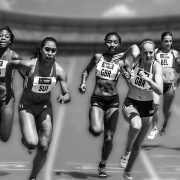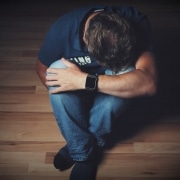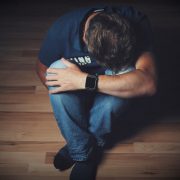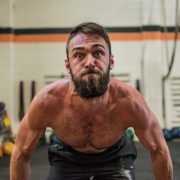Biomechanics versus pain science: a review of the Greg Lehman course
Just this weekend, I was fortunate to attend quite a popular course held by Greg Lehman. Reconciling Biomechanics with pain science is Greg’s attempt to paint somewhat of a clearer picture as to how can we do the best we can with our clients when it comes to utilizing the very latest in research relating to pain and musculo-skeletal health.
Greg is, simply put, one awesome dude. That statement happens to be true on, at the very least, two levels.
One, he is highly educated as he is a physiotherapist, chiropractor and strength and conditioning specialist. As if this wasn’t enough, he is also a renowned researcher.
Two, and even maybe more importantly, it is obvious that Greg is passionate about providing the very best care to his patients and he is quite amazing at communicating the principles that guide his practice.
To be frank, I enjoyed the course as much as I was, at times, biting my tongue. A lot of very critical information was shared yet, although Greg is a thorough scientist, there were times where, I believe, gratuitous statements were made that can decrease our efficiency with clients.
This being said, in order to organize my thoughts, here is my top 5 of what I learned that will impact how I work and my top 5 of what was said that made me go hmm…
TOP 5 GEMS
- The notion of adaptability and tolerance
Greg speaks of our role as practitioners in the sense where we are responsible for facilitating adaptability and tolerance. In that respect, I believe it’s hard to disagree with this notion.
The systems we work on will, one day, falter. In the meantime, one can think that it is more than noble to increase individual’s threshold for the various stresses that they are submitted to.
- We need more research as to how much pain is ok with recovery exercises
The literature seems to support that, while rehabilitating, some level of pain is ok. Greg is quite reasonable when it comes to suggestions or advices to practitioners as it seems like a lot more in unknown about the why’s and the what’s of this works than anyone would want.
If some say there should be no pain while rehabilitating, it was refreshing to see that Greg, in all sincerely, is just not sure as to how much pain is acceptable.
- The higher the loads, the more biomechanics matter
Pain science has been responsible, in some way, for the decrease of interest in how biomechanics affects our clients. Some practitioners have gone quite far in dismissing the role that biomechanics can play in how clients perceive pain. Greg states that the higher the loads that are handled, the more biomechanics matter. This can comfort a lot of us in the physical performance industry that are weary about optimal ranges of motion and, dare I say “efficient” movement patterns?
- Loading proximal to distal
Greg speaks of loading tissue to increase its resilience. Research, generally speaking, supports the idea that if a tissue is injured, somehow, someway, at some point, loading it will increase its tensile strength. In doing so, he suggests that we load the tissues that are injured first, but not last. He believes that a comprehensive, complete program should also target the proximal and distal joints to the one injured. As far as if strengthening just about every joint is the ticket to being pain free and performance could also be discussed but, at least, he agrees with addressing the body as a whole.
- Exposition versus protection
Greg questions himself considerably as to when do you protect and when you expose an injured joint to stress. That being said, the very fact that, although he is self admittedly, a movement optimist, he is able to go against his very own bias and give the joint a break is a pretty cool thing. Quite frankly, Greg’s approach is quite… balanced. He would make an amazing posturologist! 😉
T0P 5 MOMENTS THAT MAKE YOU GO HMMM…
- A minute of walking turns into 10…
I’ve mentioned it above: Greg is self admittedly a movement optimist. At some point during the course, he states that when rehabilitating someone, at some point, suggesting that they walk a minute will eventually turn into ten minutes. I can appreciate the optimism but I have to say that this is simply not always the case.
At some point, Greg plays a video of a toddler with a very peculiar crawling pattern. The child is getting from point A to point B on his bum and with only one leg. He then goes on to say it’s normal. I intervened and got him to admit that it was, at best, common. It could be seen as normal because it is often witnessed. That being said, he was also quite comfortable to admit that it might not be optimal.
It’s interesting to me that he would most likely agree that if motor control had to be learned, it’ possible that it was not learned as well by all. Could it be then that different crawling patterns can lead to different forms of gait? Could it be that some forms of gait are simply more efficient than others? It’s interesting how, in the context of pathology, we recognize that gait can be affected. Yet, without the presence of pathology, gait differences are apparently just that, differences.
Greg is also quick to propose that, if the goal is pain reduction, there is really no good way to move. The way to move is the way it doesn’t hurt. When it comes to performance, though, it’s apparently a bit different. He doest stipulate that efficiency matters. So what if you want to walk with efficiency? I am not too sure what Greg’s thoughts would be but it seems to me like it’s somewhat unfair to treat for pain differently that we treat for performance. Isn’t everyone interested in some form of performance? I know I am.
- Soleus exercise – look in the mirror at your sternum
At some point during the course, Greg demonstrates a pretty cool exercise for the soleus muscles. To help with stabilization, he mentions that you can do the exercise in front of a mirror.
Is he aware of the righting reflex? The righting reflex, also known as the labyrinthine righting reflex, is a reflex that corrects the orientation of the body when it is taken out of upright position.
It is solicited with a lack of ocular convergence, so that the subject can align his gaze with the horizon. The accommodation: a head tilt. The head tilt will modify weight distribution on to the feet. It is JP Roll, late French neuroscientist that demonstrated a veritable axis between the eyes and the feet (1987).
How can that not modify the recruitment of the muscles in the lower legs? How can we not take into account oculo-motricity in our therapy programs if one condition for stability is to align our gaze horizontally?
- Pain occurs when stresses are not managed by the individual
This can actually be seen as quite a strong feature of the course. I do agree that it’s quite relevant to take into account all of the factors that can influence pain. Sleep, for example, is one of them. That being said, where this can get slippery is if you start telling your clients that they need to systematically sleep more when, for them specifically, maybe sleep is not a significant component of their pain. The same goes for asking them to better manage their anxiety. What I have seen clinically is that, when we increase balance (as measured by force plate), we typically see a decrease in both stiffness and levels of anxiety. What could explain this? We know that the vestibular system projects to both the somatic nervous system and limbic system. Could this be enough to account for positive clinical outcomes? It’s hard to answer this question at this point. That being said, doing so does not mean we cannot refer to a psychologist so that our client finds peace.
- Normal asymmetries
Greg speaks of normal asymmetries. That being said, a lot is quite normal to Greg. When asked about it, he does agree that what he means by “normal” is “common”. Well, that is one significant difference for someone who is so precise about all aspects of his work. What’s common can be far from normal. To boot, it can be even further from optimal. And here is the thing… the word optimal never actually comes out of anyone’s mouth either giving or taking the course. Greg goes as far as to say that pain is normal. Well, I guess that being overweight is normal as well… or is it common? Is it optimal?
- Posture or position?
Last but not least, Greg refers to postural interventions as positional ones. Don’t get me wrong; he is not the only one to lack in the distinction department when it comes to the difference between posture and position. Posture is an involuntary motor act and I don’t sincerely know to which extent he understands that. I am convinced he is not aware that by manipulating key sensory areas such as the feet and eyes, for example, immediate changes in posture (read base tone) can be analyzed. There are so many publications on this very topic! That being said, although Greg has probably read more research papers than I ever will in this lifetime and the next, I do believe he is lacking in the neurosciences as they relate to posture and gait.
In conclusion, Greg is awesome and honest about his biases, which is even more awesome. I have to admit that I would love to spend an hour with him and show him what feet and eyes can do when stimulated to improve neural drive. I think it would be fun! Who knows, we just might be able to improve his gymnastics!










Leave a Reply